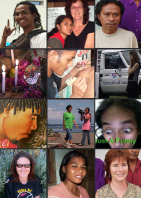Pedro Lebre – Autobiography
A summary autobiography – written for sms by Pedro Lebre June 2005
On the 25th, April 1974 a coup took place in Portugal.
I was in Australia when the coup in Portugal happened. I left Timor in March 1974, and that happened a month later. I was glad because I could return to my country.
I had to leave my country because of the Portuguese intels’ suspicions about me over of the relationship with foreigners, mainly australians, with whom I worked.
Also because I come from Uatucarbau, the place where the revolt of 1959 took place against the Portuguese.
I returned to Timor in December 1974. The Portuguese intels were gone, and colonial rule was over, but local political manoevring created new problems in the early days of freedom to Timor. I was non-political but did what I could to help the situation.
In August 1975, the civil war broke out, and I worked for the International Committee of Red Cross, ICRC, and Australian Red Cross for humanitarain Aid as a volunteer.
At the same time, I was helping with interpretation for Aid organisations and journalists from Australia. Among them was Jill Jollife, who was in Dili at this time, and those who were killed in Balibo by Indonesian military.
In the early days after the Indonesian invasion I was working again as volunteer for Indonesian Red Cross for 6 months and later as a public servant.
When the Indonesian government decided to open East Timor for foreigners under the the mandate of former governor Mario Carasacalao in 1989, I planned to take part in the tourism development program. I had involved myself in tourism since 1967, in Hotel Baucau and moved to Dili in 1969 under a scholarship from Kensington Rotary Club from Sydney. Many politicians knew that . Vila Harmonia was just a residence before that, and I applied to set it up into accomodation with six rooms and I was successful. The Indonesian reason for opening up East Timor at this time was based on development and tourism
Jen: How I met Pedro Lebre
I met Pedro Lebre when I stayed at the famous Villa Harmonia in Dili on my way to Suai with Lee Kirk in 2003. You couldn’t find a friendlier place, Pedro and his family run it and look after everyone with great warmth. We celebrated Lee’s 30th birthday there and Pedro wrote a short history about himself and gave me the poems I have posted.
Villa Harmonia was home to many many activists who dared to visit East Timor during the Indonesian occupation and as you will read, he must have played host to the famous Balibo five. The group was made up of two Australians, reporter Greg Shackleton, 27, and sound recordist Tony Stewart, 21, and a New Zealander, cameraman Gary Cunningham, 27, for HSV-7 in Melbourne, and two British cameramen Brian Peters, 29, and reporter Malcolm Rennie, 28, working for TCN-9 in Sydney.
At the time of writing an official enquiry into the circumstance of their deaths has found, what many people working in solidarity with East Timor have known for over thirty years, that there was a massive cover up because the journalists were killed in cold blood to prevent them telling the world what was going on.
Shirley Shackleton, widow of Greg Shackleton is a resident of Pt Phillip and her story can be found in ‘Timor Ponies of Pt Phillip.’ Stories of persistence and solidarity from people well known to Pedro.
You can follow any responses to this entry through the RSS 2.0 feed. Both comments and pings are currently closed.









